
Throughout Earth’s history, there have been several catastrophic events that have impacted all life on Earth.
And even though we humans weren’t there when they happened, who knows, without those apocalyptic events, perhaps we wouldn’t be here at all today.
In this article, we will explore the top 5 horrible apocalyptic events in Earth’s history.
So, without further ado, let’s start.
1. The Great Dying
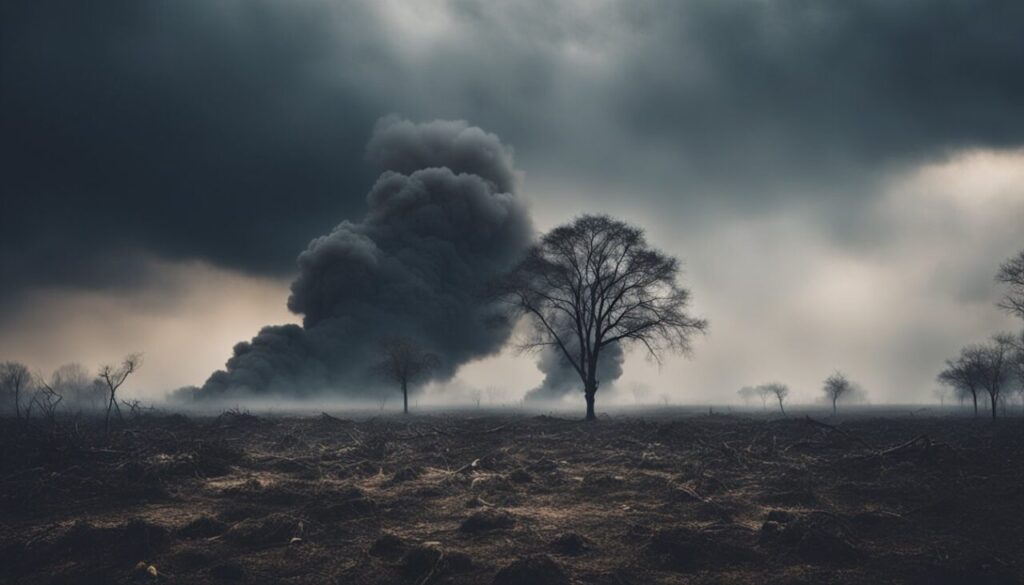
The Great Dying, also known as the Permian-Triassic extinction event, is considered the most catastrophic event in Earth’s history. It occurred approximately 252 million years ago, wiping out more than 90% of all marine species and 70% of terrestrial species.
Scientists believe that the cause of this event was a combination of factors, including massive volcanic eruptions, climate change, and ocean acidification.
The volcanic eruptions released huge amounts of carbon dioxide and other greenhouse gases into the atmosphere, leading to a significant increase in global temperatures.
This, in turn, caused the oceans to become more acidic, which made it difficult for many marine organisms to survive.
The Great Dying had an enormous impact on the evolution of life on Earth, as it opened up new ecological niches that allowed new species to emerge and thrive.
As mentioned at the beginning of this article – without those events we humans probably wouldn’t be here on Earth today. Not in this form at least.
Namely, if only one of the events mentioned in this article didn’t happen, the evolution of life on Earth would be completely different.
Interesting fact: The Great Dying is also known as the "mother of all extinctions" and is estimated to have taken up to 10 million years for life on Earth to fully recover.
2. End-Triassic Extinction
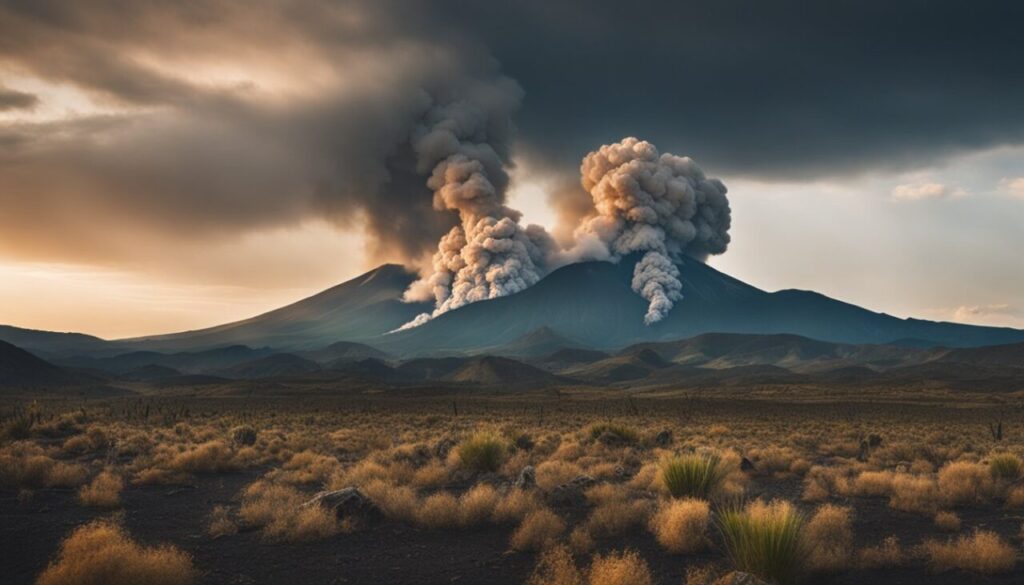
The End-Triassic extinction event occurred about 201 million years ago and is considered one of the most significant mass extinctions in Earth’s history.
During this event, about 76% of all marine and terrestrial species disappeared, including many large reptiles and amphibians. This event marked the end of the Triassic period and the beginning of the Jurassic period.
Scientists believe that the cause of the End-Triassic extinction was a combination of massive volcanic eruptions and the release of carbon dioxide into the atmosphere.
These eruptions caused a significant increase in global temperatures (as in Great Dying), leading to widespread droughts and wildfires. The resulting environmental changes made it difficult for many species to survive.
Despite the severity of the End-Triassic extinction, it paved the way for the evolution of new species, including the rise of dinosaurs as the dominant land animals on Earth.
Interesting fact: The End-Triassic extinction event is also known as the Triassic-Jurassic extinction event and is believed to have taken place over a period of less than 10,000 years.
3. The Cretaceous-Paleogene Extinction Event
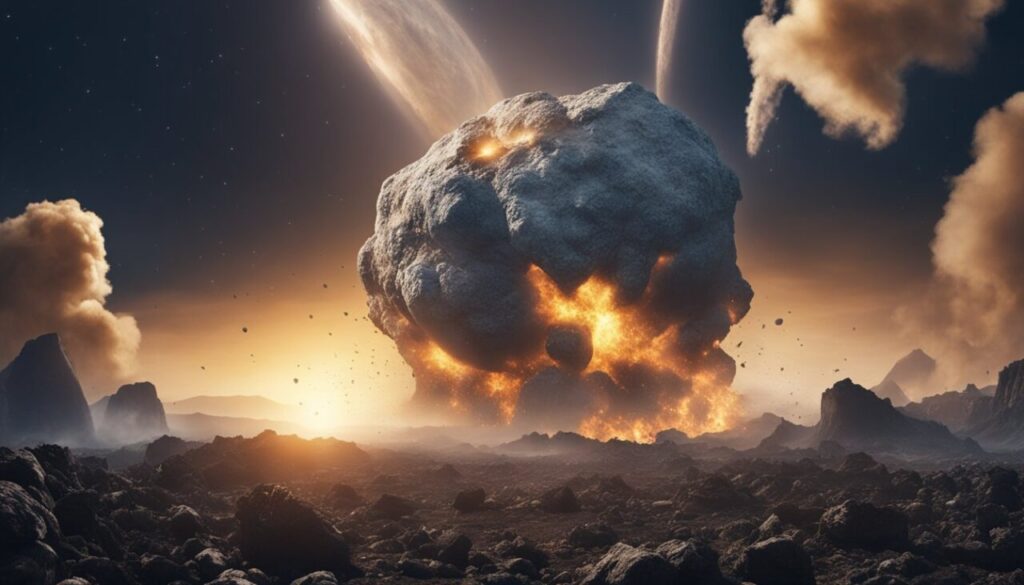
The Cretaceous-Paleogene extinction event, also known as the K-Pg extinction event, occurred approximately 66 million years ago.
This event resulted in the extinction of three-quarters of all plant and animal species on Earth, including the dinosaurs.
The cause of this extinction event is widely believed to be a massive asteroid impact that occurred in what is now the Yucatan Peninsula in Mexico. It created a crater that we now call Chicxulub Crater.
The impact caused a global catastrophe, resulting in a massive dust cloud that blocked out the sun, causing a global cooling effect.
This led to a significant drop in temperatures and a decrease in photosynthesis, which ultimately led to the extinction of many plant and animal species.
Interesting fact: The asteroid that caused the K-Pg extinction event was estimated to be about 6 miles (10 kilometers) in diameter and impacted the Earth with a force equivalent to 100 trillion tons of TNT. To put this into perspective, the Hiroshima atomic bomb had an estimated yield of around 15 kilotons of TNT equivalent.
4. The Late Devonian Extinction
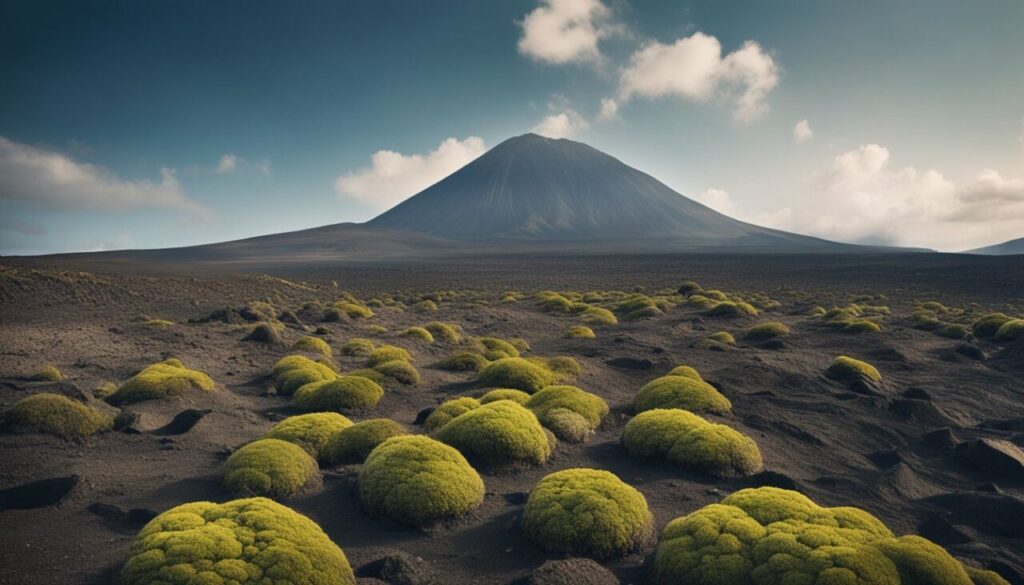
The Late Devonian Extinction was a catastrophic event that occurred approximately 372 million years ago. It is believed that this extinction was caused by a combination of factors, including climate change, sea level fluctuations, and the emergence of new predators.
During this time, most of the marine species were affected, including trilobites, corals, and brachiopods.
Scientists believe that the primary cause of this extinction was a decrease in oxygen levels in the ocean (ocean anoxia).
Interesting fact: This extinction event occurred over a relatively long period of time, spanning several million years, and it affected marine life much more severely than terrestrial life.
5. The Ordovician-Silurian Extinction
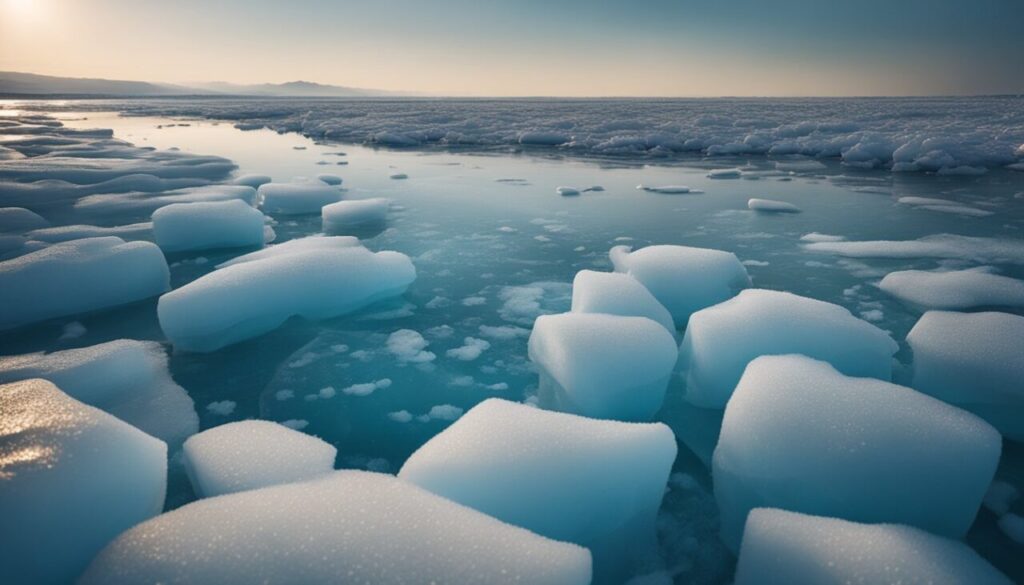
The Ordovician-Silurian extinction was an apocalyptic event that took place approximately 444 million years ago, wiping out approximately 85% of all marine species.
This event was caused by a combination of factors, including a drop in sea levels, glaciations, and a burst of volcanic activity.
During this time, the Earth’s climate was changing rapidly, and the cooling of the planet led to the formation of massive glaciers.
As the ice sheets grew, sea levels dropped, causing the widespread extinction of marine life.
Additionally, volcanic activity caused a surge in carbon dioxide levels, leading to ocean acidification and further extinction.
One of the most significant losses during this extinction was the disappearance of the trilobites, a group of marine arthropods that had been present for over 270 million years.
This extinction event also paved the way for the rise of new species, including the first jawed fish.
Interesting fact: The Ordovician-Silurian extinction is the second-largest extinction event in Earth's history, surpassed only by the Permian-Triassic extinction.
So there you have it. This is the list of the top 5 biggest extinction events in Earth’s history.
In the end, we’ll leave you with one more interesting fact: The largest asteroid impact in Earth’s history occurred around 2 billion years ago and is believed to have been responsible for the formation of the Vredefort crater in South Africa, estimated to be 170–300 kilometers (110–190 mi) in diameter.
Luckily, at that time, there wasn’t much life on Earth except single-cell organisms, bacteria, viruses, and eukaryotic cells (cells with internal organelles).




















